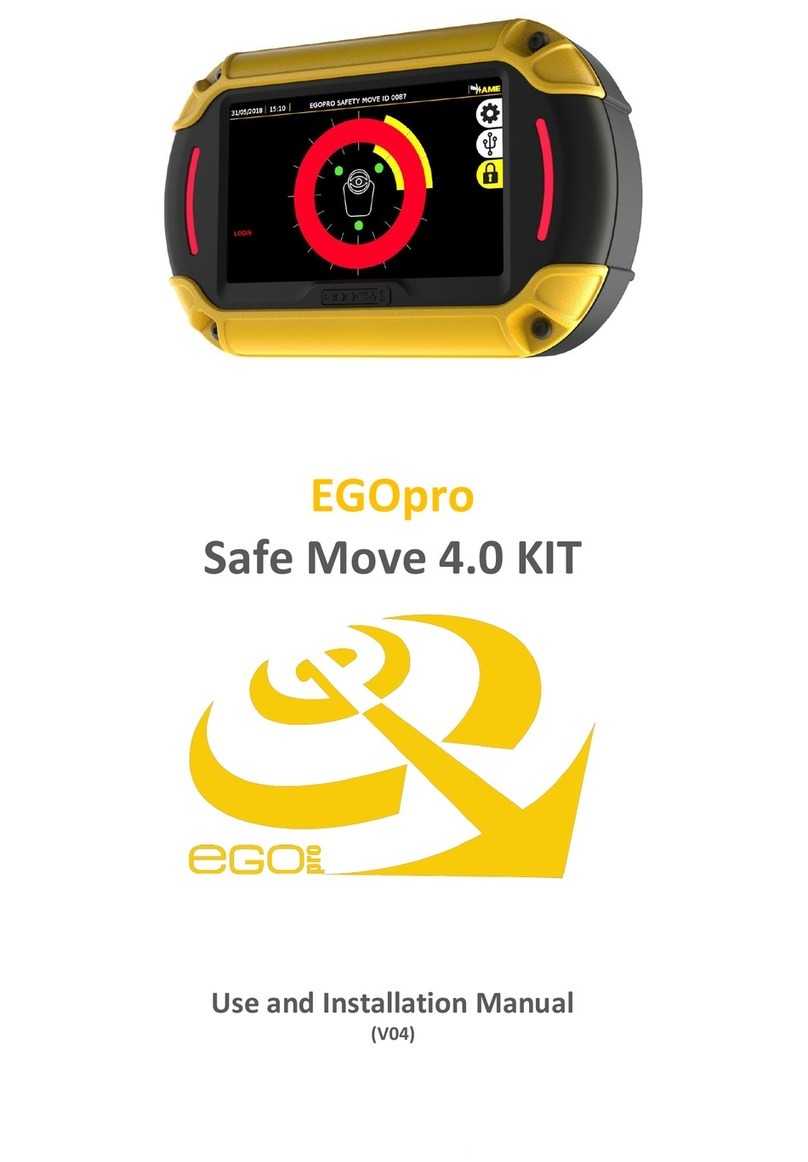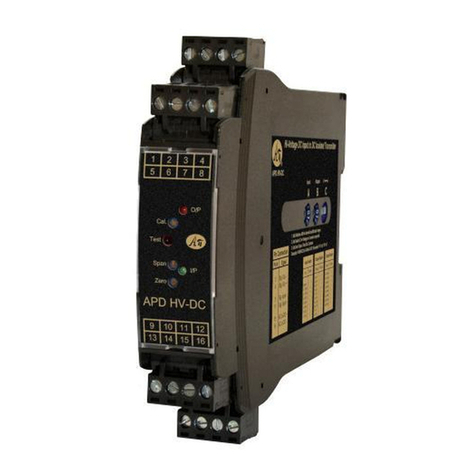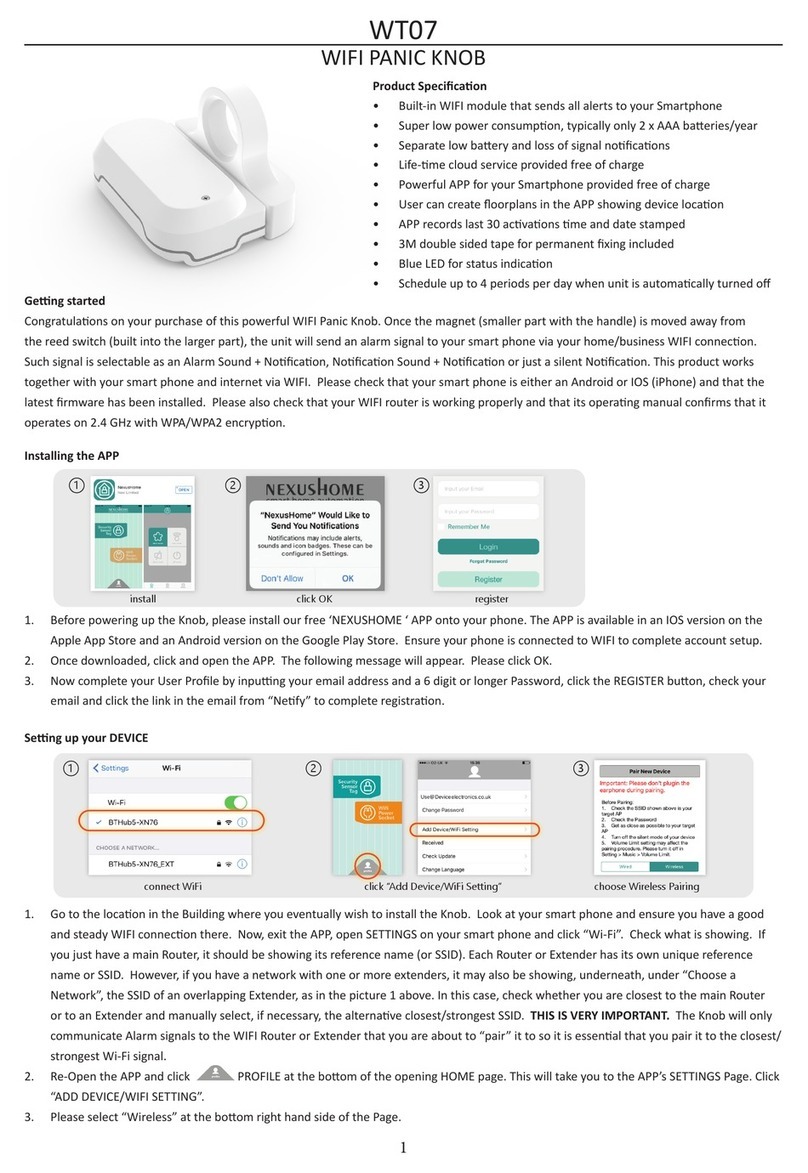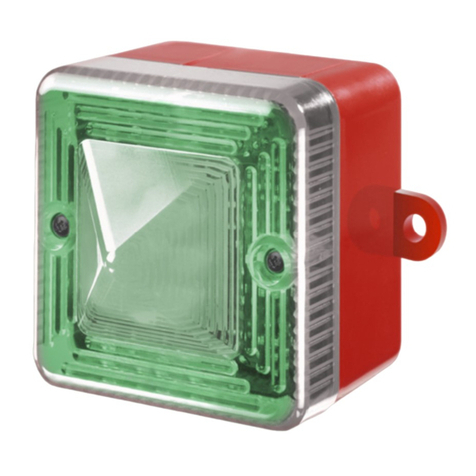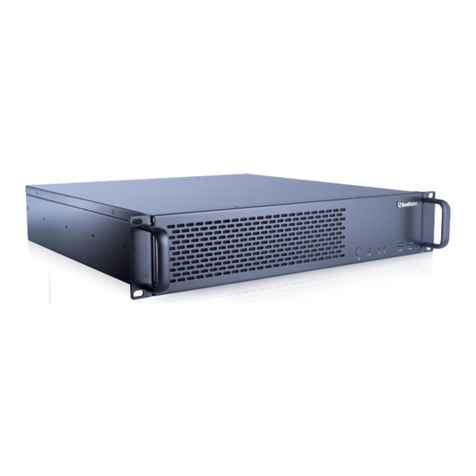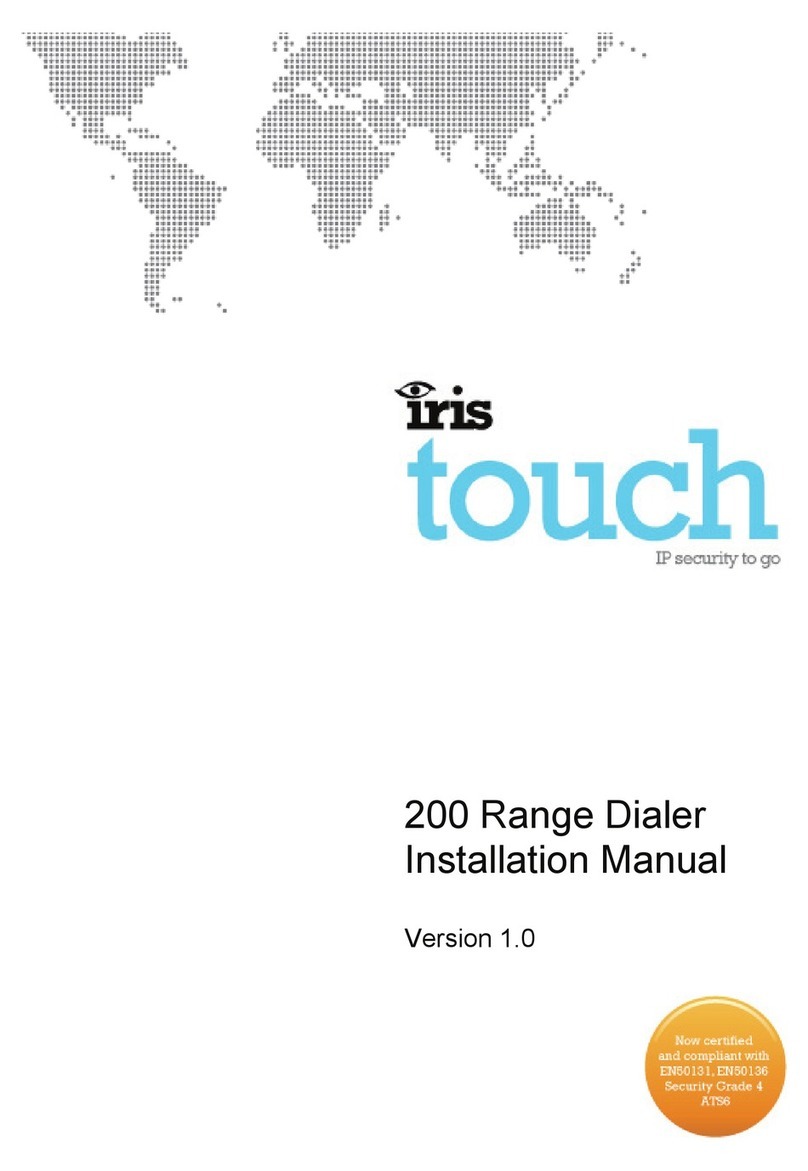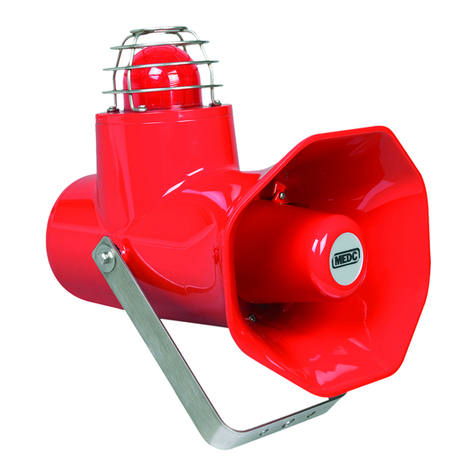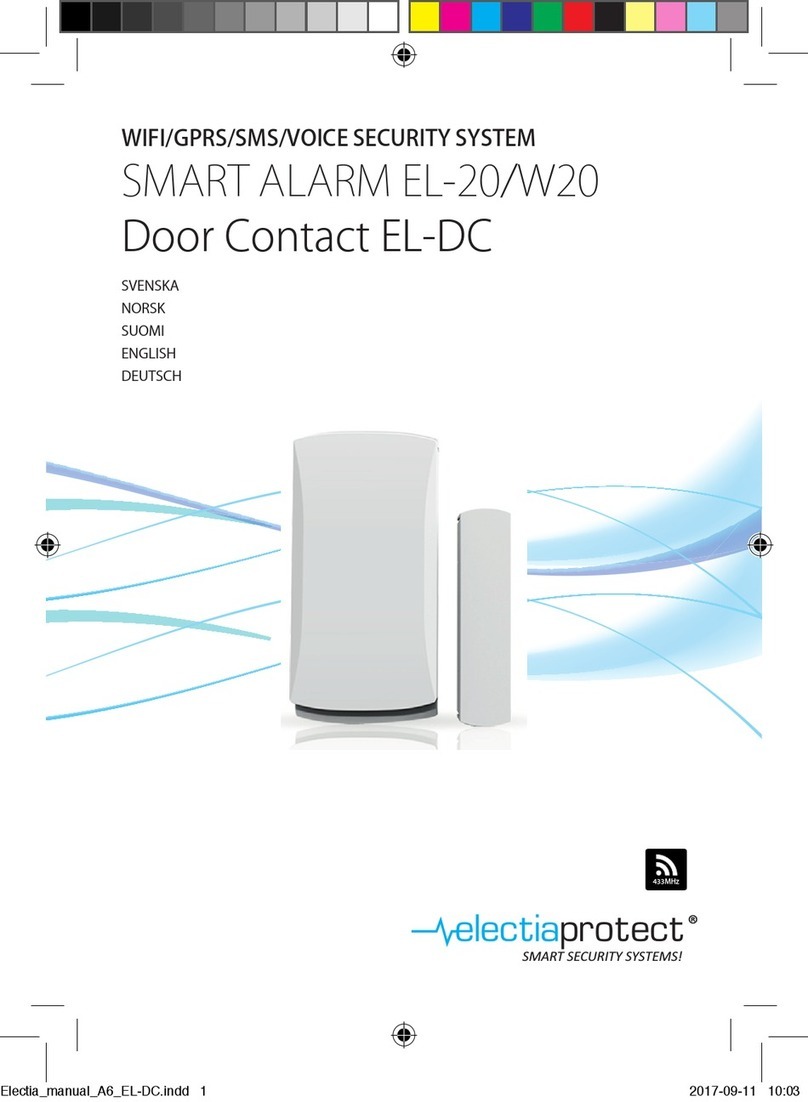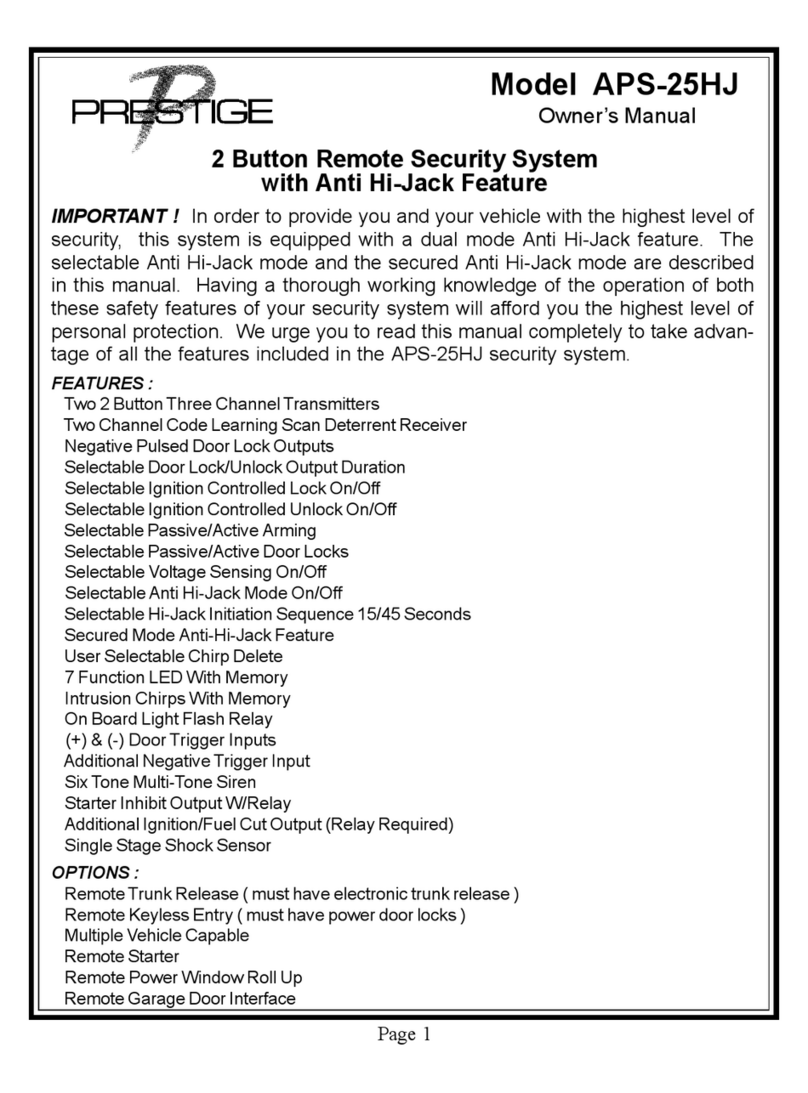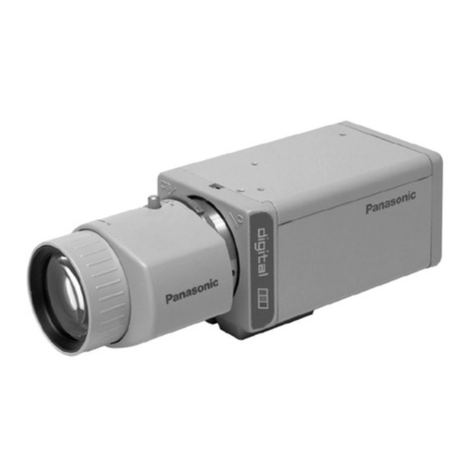EGOpro Safe Move 4.0 Technical specifications

EGOpro
Safe MOVE 4.0
Use and Installation Manual
(V01)

TABLE OF REVISIONS
2 The technical materials and information contained in this document are strictly confidential and the exclusive property of Advanced Microwave Engineering s.r.l.
These materials and information are intended solely for the purpose designated and may not be used otherwise.
It is not permitted to disclose or reproduce them in whole or in part without express written permission.
TABLE OF CONTENTS
1 TABLE OF REVISIONS 6
2 CONFORMITY 7
3 SAFETY INSTRUCTIONS 7
3.1 DISPOSAL 7
3.2 LIMITATIONS FOR USE 7
4 INTRODUCTION 8
4.1 INTENDED USE 8
4.2 SYMBOLS 8
5 BASIC KIT COMPONENTS 9
6 SYSTEM OPERATION 10
6.1 PEDESTRIAN WORKER PRE-WARNING 10
6.2 PEDESTRIAN WORKER WARNING 10
6.3 VEHICLE-VEHICLE WARNING 10
7 PLACING TAGS 11
7.1 HELMET TAG FITTING 11
7.2 WEARABLE TAG ACCESSORIES 11
7.3 PROCEDURE FOR CHANGING THE BATTERY 12
8 INSTALLATION ON THE VEHICLE 13
8.1 SYSTEM ARCHITECTURE AND GENERAL INSTRUCTIONS 13
8.2 POSITIONING THE DEVICES 15
8.2.1 POSITIONING THE CONTROL UNIT (CPU) 16
8.2.2 POSITIONING THE DISPLAY 17
8.2.3 POSITIONING THE SENSORS 17
8.2.4 POSITIONING THE HUB 18
8.3 CONNECTIONS 19
8.3.1 GENERAL INSTRUCTIONS 19
8.3.2 CPU WIRING 21
8.3.3 CONNECTING SENSORS 22
8.3.4 CONNECTING THE HUB 24
8.4 INSTALLING THE SYSTEM WITH M12 CONNECTORS 26
8.4.1 LENGTH OF CONNECTIONS 27

TABLE OF REVISIONS
3
The technical materials and information contained in this document are strictly confidential and the exclusive property of Advanced Microwave Engineering s.r.l.
These materials and information are intended solely for the purpose designated and may not be used otherwise.
It is not permitted to disclose or reproduce them in whole or in part without express written permission.
8.5 EXPANSION OF THE NUMBER OF SENSORS 28
8.6 STOPPING DISTANCES AND ACTIVATION DISTANCES 29
8.7 VEHICLE DECELERATION AND DRIVER'S RESPONSE DISTANCES 29
8.8 SYSTEM ACTIVATION DISTANCES. SETTING THE POWERS TRANSMITTED 31
8.9 CALCULATING THE DISTANCE IN CASE OF VEHICLE-VEHICLE COLLISION. 32
9 TURNING-ON AND CONFIGURATION 33
9.1 TURNING ON THE SYSTEM 33
9.2 CONFIGURATION 34
9.2.1 STEP 1 | CONFIGURATION MENU 34
9.2.2 STEP 2 | ENTERING THE PASSWORD 34
9.2.3 STEP 3 | SENSORS 35
9.2.4 STEP 4 | SENSORS SEARCH 36
9.2.5 STEP 5 | SEARCHING SENSORS BY ID 37
9.2.6 STEP 6 | SEARCHING SENSORS BY POSITION 40
9.2.7 SEARCHING SENSORS WITHOUT ID 41
9.3 TEST 41
9.3.1 SENSOR CHECK 41
9.3.2 TAG DETECTION TEST 42
10 OPERATION MODES 43
10.1 DISPLAY OVERVIEW 43
10.2 PEDESTRIAN WORKER’S TAG DISPLAY ALARM: PRE-WARNING 44
10.3 PEDESTRIAN WORKER’S TAG DISPLAY ALARM: WARNING 45
10.4 SENSORS AND HUB DIAGNOSIS 46
10.5 DRIVER LOGIN 47
10.6 DATA ACCESS 49
11 BASIC CONFIGURATION 50
11.1 ACCESS TO MENU 50
11.2 REBOOT 51
11.3 CONFIGURATION MENU 52
11.4 CLOCK & DATE 53
11.4.1 MANUAL 53
11.4.2 AUTOMATIC 54
11.5 ALARM CONFIGURATION 55
11.6 SENSORS CONFIGURATION 57
11.6.1 SENSORS SEARCH 57
11.6.2 SENSORS POWER 58
11.6.3 LR SENSORS POWER 59
11.6.4 SR SENSORS POWER 60
11.6.5 TAG SETTINGS 61
11.7 LANGUAGE 62

TABLE OF REVISIONS
4 The technical materials and information contained in this document are strictly confidential and the exclusive property of Advanced Microwave Engineering s.r.l.
These materials and information are intended solely for the purpose designated and may not be used otherwise.
It is not permitted to disclose or reproduce them in whole or in part without express written permission.
11.8 USERS 63
11.8.1 ADDING/EDITING USERS 64
11.8.2 IMPORTING/EXPORTING USERS 65
12 OPTIONAL MODULES 67
12.1 DISPLAY OVERVIEW WITH ACTIVE MODULES 67
12.2 NON-ACTIVE MODULE ALARM 68
13 VEHICLE-VEHICLE ANTI-COLLISION MODULE 69
13.1 INSTALLATION 69
13.2 ALARM VISUALISATION 69
13.3 SENSORS POWER 70
14 FILTER MODULE 71
14.1 INSTALLATION 71
14.2 CONNECTIONS AND HW CONFIGURATIONS 72
14.3 VISUALISATION 73
14.4 CONFIGURATION 74
14.5 AUTO LOGIN 75
15 BADGE MODULE 76
15.1 INSTALLATION 76
15.1.1 SERIAL READER 76
15.1.2 USB READER 76
15.2 VISUALISATION 76
15.3 BADGE ASSOCIATION 77
16 TRACKING ADAPTIVE RANGE MODULE 79
16.1 VISUALISATION 79
16.2 ADAPTIVE SENSOR POWER 80
16.2.1 SENSORS NORMALIZATION 83
16.2.2 EMERGENCY LEVEL 84
17 GPS MODULE 85
17.1 INSTALLATION 85
17.2 GPS VISUALISATION 86
18 AISLE MODULE 87

TABLE OF REVISIONS
5
The technical materials and information contained in this document are strictly confidential and the exclusive property of Advanced Microwave Engineering s.r.l.
These materials and information are intended solely for the purpose designated and may not be used otherwise.
It is not permitted to disclose or reproduce them in whole or in part without express written permission.
18.1 INSTALLATION 87
18.2 VISUALISATION 88
18.3 AISLE POWER SETTING 89
18.4 AISLE POWER SETTING | VEHICLE- VEHICLE 90
19 WI-FI MODULE 91
19.1 INSTALLATION 91
19.1.1 WI-FI ANTENNA 91
19.1.2 CELLULAR ROUTER 92
19.2 VISUALISATION 96
19.3 DATA TRANSFER 97
19.4 REMOTE CONTROL 98
20 CHECKLIST MODULE 99
20.1 VISUALISATION 99
20.2 TEST RESULT 102
20.3 CONFIGURATION 103
20.3.1 UPLOADING SETTINGS 104
21 INDOOR SPEED MODULE 105
21.1 INSTALLATION 105
21.2 INDOOR SPEED VISUALISATION 106
21.3 CONFIGURATION 107
22 SHOCK SENSOR MODULE 109
22.1 INSTALLATION 109
22.2 VISUALISATION 110
22.3 CONFIGURATION 111
22.4 SHOCK SENSOR TEST 113
23 MAINTENANCE 114
23.1 SOLVING COMMON PROBLEMS 114
23.1.1 SENSORS DIAGNOSIS 114
23.1.2 SOLUTION TO COMMON PROBLEMS 114
23.2 RECOMMENDED CHECK INTERVALS 116
23.3 CLEANING COMPONENTS 117
24 WIRING DIAGRAMS 118
24.1 CABLES OF SENSORS 118

TABLE OF REVISIONS
6 The technical materials and information contained in this document are strictly confidential and the exclusive property of Advanced Microwave Engineering s.r.l.
These materials and information are intended solely for the purpose designated and may not be used otherwise.
It is not permitted to disclose or reproduce them in whole or in part without express written permission.
24.2 SAFE MOVE CPU CONNECTION 119
24.3 HUB-SENSORS CONNECTION 120
24.4 SENSORS CONNECTION 121
24.5 SAFE MOVE POWER DISTRIBUTION 122
24.6 SAFE MOVE POWER DISTRIBUTION (HIGH VOLTAGE BATTERY) 123
24.7 WI-FI MODULE CONNECTION 124
24.8 CELLULAR MODEM CONNECTION 125
24.9 BADGE READER CONNECTION 126
24.10 HUB EXTENSION (UP TO 8 SENSORS) 127
24.11 AISLE SENSORS CONNECTION 128
24.12 SPEED SENSOR CONNECTION 129
24.13 SHOCK SENSOR CONNECTION 130
25 DATA SHEET OF THE COMPONENTS OF THE SYSTEM 131
25.1 SENSOR 131
25.2 HUB 132
25.3 WEARABLE TAG 133
25.4 HELMET TAG 134
25.5 CONTROL UNIT 135
25.6 DISPLAY 136
25.7 INHIBITOR 137
25.8 SPLITTER 138
25.9 INDOOR SPEED SENSOR 139
25.10 SHOCKS SENSOR 140
1 TABLE OF REVISIONS
Date
Rev.
Notes
22/11/2019
01 Draft of new full version with modules

CONFORMITY
7
The technical materials and information contained in this document are strictly confidential and the exclusive property of Advanced Microwave Engineering s.r.l.
These materials and information are intended solely for the purpose designated and may not be used otherwise.
It is not permitted to disclose or reproduce them in whole or in part without express written permission.
2 CONFORMITY
The manufacturer, Advanced Microwave Engineering Srl, hereby declares that the type of radio
equipment P LX HUB SR, PLX TAGSAFETY 3T, PLX TAGSAFETY 3TH, P LX SAFEMOVE DIS, P LX SAFEMOVE
CPU, PLX SAFEMOVE HUB 4, PLX SAFEMOVE HUB 4M, PLX SAFEMOVE SENS 4, PLX SAFEMOVE
SENS 4M complies with the RED directive 2014/53/EC. The full text of the EU Declaration of
Conformity is available on the following Internet address:
http://www.ameol.it/en/declaration-of-conformity/
3 SAFETY INSTRUCTIONS
3.1 DISPOSAL
Treatment of the electrical or electronic device at the end of its service life (applicable in all European Union
countries and in other European Countries with waste sorting system) This symbol indicates that the product
must be taken to a suitable collection point for recycling electrical and electronic equipment.
The EGOpro Safe MOVE 4.0 System is a set of electrical and electronic equipment
By making sure that this product is correctly disposed of, you will contribute to preventing potential negative
consequences for the environment and for health that would otherwise be caused by its improper disposal.
Recycling these materials helps to preserve natural resources. For more detailed information about how to
recycle this product, contact the municipal office or the local waste disposal service. In case of unauthorised
disposal of electrical and/or electronic equipment, the penalties foreseen by the applicable regulations could be
applied (valid only for Italy).
3.2 LIMITATIONS FOR USE
Upon installing the system in industrial vehicles, strictly follow the instructions given by the manufacturer of the vehicle contained in
the manual (electrical and mechanical connections, etc.). Only duly trained personnel must install the system. The forklift truck should
not be modified in such a way as to render the Declaration of Conformity null and void.
If the installation does to comply with the instructions contained in the manufacturer’s manual, AME shall not be held liable for any
damage to the vehicle or its poor performance.
The EGOpro Safe MOVE 4.0 system (the Product) is a safety supporting tool to prevent man-vehicle and vehicle-vehicle collisions. This
is not a personal safety system.
This system has been designed to offer an additional aid for driving. While driving, the driver’s total attention is always required. The
driver must always be ready to react- act on the brakes and turn the steering-wheel- in order to avoid possible collisions. The EGOpro
Safe MOVE 4.0 system does not replace the driver’s attention and judgement or need to slow down or brake in case of danger, and it
does not exonerate the purchaser and the driver from adopting the usual safety procedures expected.
The control of the vehicle is still under the driver’s responsibility, who must always assess the current conditions in which the vehicle
moves, paying attention to the presence of pedestrian workers, other vehicles, and obstacles in general.
In no case shall AME be held liable for direct or indirect damage of any kind (personal injuries or damage to objects) suffered for any
reason whatsoever by the Purchaser or by third persons due to the use of the Product.
The EGOpro Safe MOVE 4.0 system is a product for professional use, and it may not be used in places frequented by children.

INTRODUCTION
8 The technical materials and information contained in this document are strictly confidential and the exclusive property of Advanced Microwave Engineering s.r.l.
These materials and information are intended solely for the purpose designated and may not be used otherwise.
It is not permitted to disclose or reproduce them in whole or in part without express written permission.
4 INTRODUCTION
4.1 INTENDED USE
The EGOpro Safe MOVE 4.0 System is a safety supporting system that is used for detecting the presence of pedestrian
workers and vehicles equipped with suitable devices. When either are detected, sound and visual signals are generated,
to which the I/O that are present in the system can be associated.
4.2 SYMBOLS
Symbol Description
DC or AC voltage
DC voltage
Symbol no. 5031 of IEC 60417 is used to indicate, on the identification plate, that the
equipment may only be used with direct current.

BASIC KIT COMPONENTS
9
The technical materials and information contained in this document are strictly confidential and the exclusive property of Advanced Microwave Engineering s.r.l.
These materials and information are intended solely for the purpose designated and may not be used otherwise.
It is not permitted to disclose or reproduce them in whole or in part without express written permission.
5 BASIC KIT COMPONENTS
The EGOpro Safe MOVE 4.0 basic kit consists of:
1 P LX SAFEMOVE DIS - Display with cable
(plate and joint included)
3 P LX SAFEMOVE SENS4 - SAFE MOVE 4.0
multifunction sensor.
1 P LX SAFEMOVE HUB4 - HUB SAFEMOVE 4.0.
1 P LX SAFEMOVE CPU - CPU for SAFE MOVE.
(plate and joint included)
GENERAL CONSUMPTION VALUES
Consumption to the Hub up to 3 sensors 20W
Consumption of CPU with active display 15W
Consumption of CPU with display on standby 1W

SYSTEM OPERATION
10 The technical materials and information contained in this document are strictly confidential and the exclusive property of Advanced Microwave Engineering s.r.l.
These materials and information are intended solely for the purpose designated and may not be used otherwise.
It is not permitted to disclose or reproduce them in whole or in part without express written permission.
6 SYSTEM OPERATION
The solution offered by the EGOpro Safe MOVE 4.0 proximity warning & alert system minimises the potential for accidents
between forklifts and operators on foot in common working areas. Through visual and sound alarms, the system warns
the driver, in real time, of the presence and position of pedestrian workers wearing active PPE who enter the danger
zones around the vehicle in motion.
With the system, the driver can promptly take the most appropriate safety measures to avoid hitting other pedestrian
workers or other vehicles.
Thanks to a multifunction sensor, the system detects pedestrian workers wearing a TAG, in two stages:
6.1 PEDESTRIAN WORKER PRE-WARNING
PRE-WARNING| The activation range can be configured up to 50 m with the control of a relay contact.
By means of a visual and sound alarm, the system warns the driver about the presence and position of the pedestrian
worker.
6.2 PEDESTRIAN WORKER WARNING
WARNING| The activation range can be configured up to 5-m with the control of a contact relay.
By means of a visual and sound alarm, the system warns the driver about the presence of the pedestrian worker with a
red circle and by switching on the lateral LEDs.
6.3 VEHICLE-VEHICLE WARNING
VEHICLE-VEHICLE WARNING| When a vehicle equipped with the EGOpro Safe MOVE 4.0 system gets into the sensor
activation area. The activation range can be configured up to 100 m.
By means of a visual and sound alarm, the system warns the driver about the presence and position of the other vehicle.

PLACING TAGS
11
The technical materials and information contained in this document are strictly confidential and the exclusive property of Advanced Microwave Engineering s.r.l.
These materials and information are intended solely for the purpose designated and may not be used otherwise.
It is not permitted to disclose or reproduce them in whole or in part without express written permission.
7 PLACING TAGS
7.1 HELMET TAG FITTING
To fit the PLX TAGSAFETY 03TH Tag, you first need to clean the helmet. Then, you have to suitably remove the grease
from the surface with the napkin supplied. Now you can affix the Tag as shown in the figure.
7.2 WEARABLE TAG ACCESSORIES
The wearable Tag is supplied together with a series of accessories that guarantee a wide range of options for wearing it.
Clip for band
Slot for strap
Snap fastener
Use the screws supplied: 2.2
X7
Use the screws supplied: 2.2
X6
Use the screws
supplied: 2.2
X7

PLACING TAGS
12 The technical materials and information contained in this document are strictly confidential and the exclusive property of Advanced Microwave Engineering s.r.l.
These materials and information are intended solely for the purpose designated and may not be used otherwise.
It is not permitted to disclose or reproduce them in whole or in part without express written permission.
7.3 PROCEDURE FOR CHANGING THE BATTERY
The battery inside the Tag is a CR2450 button cell battery.
To replace it, remove the yellow rubber piece, and then replace the battery.
Caution: respect the correct polarity; insert the battery with the
negative pole towards the circuit.
While replacing the battery in the helmet tag, be careful not to
damage or disconnect the small coaxial cables connected to the
circuit board.
Once the battery has been replaced, make sure that the Tag has turned on
correctly. Depending on the version, it can emit a long initial sound followed by
three short sounds, or only one long flash followed by three short flashes of the
LED on the board.
If this does not happen, the device has not started correctly; contact the
manufacturer.
Put the tag back into the slot at the correct position as shown in the figure
opposite.
Position the soft rubber piece back into place, and then press it in all directions
so that it correctly adheres to the rigid piece.
Battery life depends on the daily activations of the tag when it is near a vehicle equipped with the anti-collision system.
Typically, there are three identified scenarios; the following table summarises the battery life associated to each of
them:
Type of scenario Estimated duration in years
Driver use* 1.5
Pedestrian worker with high interference with vehicles 2
Pedestrian worker with low interference with vehicles 3/5
*Equipped with an inhibitor in the cabin (FILTERSENS)
<

INSTALLATION ON THE VEHICLE
13
The technical materials and information contained in this document are strictly confidential and the exclusive property of Advanced Microwave Engineering s.r.l.
These materials and information are intended solely for the purpose designated and may not be used otherwise.
It is not permitted to disclose or reproduce them in whole or in part without express written permission.
8 INSTALLATION ON THE VEHICLE
8.1 SYSTEM ARCHITECTURE AND GENERAL INSTRUCTIONS
The basic KIT of the EGOpro Safe MOVE 4.0 system that is installed on the vehicle consists of the following devices:
3 Sensors
1 HUB
1 CPU
1 Display
It is advisable to follow the workflow indicated in the following table and described in detail in the subsequent sections in
order to minimise installation problems.

INSTALLATION ON THE VEHICLE
14 The technical materials and information contained in this document are strictly confidential and the exclusive property of Advanced Microwave Engineering s.r.l.
These materials and information are intended solely for the purpose designated and may not be used otherwise.
It is not permitted to disclose or reproduce them in whole or in part without express written permission.

INSTALLATION ON THE VEHICLE
15
The technical materials and information contained in this document are strictly confidential and the exclusive property of Advanced Microwave Engineering s.r.l.
These materials and information are intended solely for the purpose designated and may not be used otherwise.
It is not permitted to disclose or reproduce them in whole or in part without express written permission.
8.2 POSITIONING THE DEVICES
To position the devices, take into account the operation characteristics of the system, the mechanical restrictions and the
IP protection degree of the devices.
For these reasons, two categories are identified:
Devices outside the driver’s cabin
Sensors are usually positioned outside the driver’s cabin, except for
exceptional cases such as exposure to high temperatures.
Devices inside the driver’s cabin
CPU and Display: due to their function and the IP protection degree, they
must be inside the driver’s cabin or, in any case, in a protected position.
The HUB can be positioned either outside or inside the driver’s cabin due to both its operation and its high degree of
protection.
The 433MHz whip aerial antenna, which is present on the HUB, must be fitted outside
The Display and the Sensors must be correctly oriented: for this reason, they are supplied with a mounting plate and a
mechanical joint onto which the support that is necessary for holding the device must be fitted.
The joint, which is made up of 2 U-shaped mechanical pieces, has been designed to be easily connected to the plate that
is present on the devices.
Find below the heights for the possible holes to be used for fixing it to the plate.

INSTALLATION ON THE VEHICLE
16 The technical materials and information contained in this document are strictly confidential and the exclusive property of Advanced Microwave Engineering s.r.l.
These materials and information are intended solely for the purpose designated and may not be used otherwise.
It is not permitted to disclose or reproduce them in whole or in part without express written permission.
8.2.1 Positioning the control unit (CPU)
The CPU is the basic element of the system and it can be positioned at any point inside the driver's cabin. The position of
the CPU must not obstruct the driver’s and the vehicle operability, and it should be handy to connect the HUB and the
Display.
To fix the CPU, use the 4 holes on the box that can be accessed by removing the device cover.
When choosing the position, keep in mind that there are usable outputs on the CPU to make it conveniently accessible
and not to be obstructed during assembly. For example, the USB port can be used to download data and for servicing.
The CPU has an IP 20 protection degree, and the connection cable is 2.50 m long.

INSTALLATION ON THE VEHICLE
17
The technical materials and information contained in this document are strictly confidential and the exclusive property of Advanced Microwave Engineering s.r.l.
These materials and information are intended solely for the purpose designated and may not be used otherwise.
It is not permitted to disclose or reproduce them in whole or in part without express written permission.
8.2.2 Positioning the Display
The Display must be positioned inside the driver’s cabin in accordance with the driver’s visibility requirements and taking
into account the CPU position: the connection cable between Display and CPU is 2.5 m long.
When installing the Display and laying the connection cable, be careful so that they do not disturb the driver’
movements and the driver’s visibility remains unaffected.
The Display has an IP 20 protection degree. Position it in the cabin, in an area protected from the elements.
The cable that carries the video signal from the CPU to the Display is double-shielded; therefore, handle the
cable carefully and avoid bending radii of less than 5 cm in order to avoid damaging the internal conductors,
in particular the ends on the connector side and the Display housing inlet.
If the display is mounted upside down to facilitate installation, the rotation of the video can be changed from
the advanced settings of the system (contact technical support for help).
8.2.3 Positioning the sensors
The basic Kit is made up of 3 sensors that are sufficient to cover small and medium-sized vehicles. The installation must
optimise coverage around the vehicle taking into account the type of mobility of the vehicle.
The most common installation includes 2 Sensors on the front/loading side, driven forward, and 1 Sensor on the rear
side/driven in reverse.
NOTE: the number of sensors can be extended up to 8 by adding suitable components (see section 8.5).
Find below the reference diagram for a counterbalanced forklift truck.
The sensors must be so positioned on the perimeter of the vehicle to have maximum visibility between Sensors and TAG.
On small/medium-sized vehicles, they are usually positioned on the uprights immediately below the roof and with a 25 °
downward inclination.

INSTALLATION ON THE VEHICLE
18 The technical materials and information contained in this document are strictly confidential and the exclusive property of Advanced Microwave Engineering s.r.l.
These materials and information are intended solely for the purpose designated and may not be used otherwise.
It is not permitted to disclose or reproduce them in whole or in part without express written permission.
NOTE: the mechanical joint supplied can be used to obtain the desired inclination.
Front sensors must have a slight orientation towards the outside. For example, for a counterbalanced vehicle, they must
be positioned outside the moulding of the fork/gripper holder mounting, and they must have an orientation angle towards
the outside of around 20°.
Be careful not to place the sensors behind obstacles such as the turret of the forks or the vehicle chassis.
For the best operation of the sensors, they must be installed in areas that are as free as possible.
8.2.4 Positioning the HUB
The HUB can be positioned at any point inside or outside the driver’s cabin, even in a hidden area, but the external RF
antenna (whip aerial antenna), connected to the HUB by means of a 1.5m-long cable, must be outside the driver’s cabin
in vertical position.
To position the external antenna, also refer to the HUB connections (see section
8.3.4
).
The position of the HUB must not obstruct the driver’s and the vehicle operability, and it should be handy to
connect the Sensors and the CPU.

INSTALLATION ON THE VEHICLE
19
The technical materials and information contained in this document are strictly confidential and the exclusive property of Advanced Microwave Engineering s.r.l.
These materials and information are intended solely for the purpose designated and may not be used otherwise.
It is not permitted to disclose or reproduce them in whole or in part without express written permission.
8.3 CONNECTIONS
8.3.1 General instructions
The necessary connections on the systems can be summarised in two categories:
Data Connections
Power Supply Connections
Data Connections
The data connection between the system devices is established with a UTP cable. As a minimum requirement, it is
recommended to use a UTP cable belonging to category 5E or higher. In the case of RJ45 connections, the same sequence
of colours must be followed on each cable end, and it is recommended to use the sequence of colours according to
Standard TIA/EIA-568-B.
The data connection is between Hub-CPU and between Sensors-Hub.
The maximum length of the connection depends on the supply voltage of the system and on the cross section of the UTP
cable (AWG). For convenience purposes, the reference tables of both connections are provided.
CPU
-
HUB Connection
HUB
-
SENSOR Connection
VDC
AWG 26
AWG 24
VDC
AWG 26
AWG 24
12 V
20m
40m
12 V
3m
6m
24 V
50m
100m
24 V
25m
50m

INSTALLATION ON THE VEHICLE
20 The technical materials and information contained in this document are strictly confidential and the exclusive property of Advanced Microwave Engineering s.r.l.
These materials and information are intended solely for the purpose designated and may not be used otherwise.
It is not permitted to disclose or reproduce them in whole or in part without express written permission.
Power Supply Connection
The system must be powered in direct current (VDC) ranging from 12V to 24V (±10%).
The devices to be powered are the CPU and the HUB. A direct positive wire (VIN) and a positive wire under key (VQ) must
arrive to the CPU, whereas only the direct positive wire protected by an ATO fuse (4A/32V) must arrive to the Hub.
Apply the supplied Fair Rite 0443178281 ferrite on the CPU power cables.
For the power supply connections, it is recommended to use an AWG 18 /0.75mm2 cable or a cable with a higher cross
section.
Within the 12÷24 VDC power supply range, the voltage of the direct positive wire (V
IN
) and of the line under
key (VQ) do not have to be the same.
In some cases, the voltage present on the wire under key is not within the range foreseen by the system. In
these cases, one solution would be using a relay at the same voltage available for changing over the forward
voltage
For vehicles with a battery with power higher than 24V, such as electric vehicles for heavy work with 48V or
80V, follow the power supply scheme specified in chapter 24.6; use the indicated isolated power supply unit
or an equivalent model whenever possible.
ATO 4A 32V
CPU
HUB
CPU
Other manuals for Safe Move 4.0
1
Table of contents
Other EGOpro Security System manuals
Popular Security System manuals by other brands
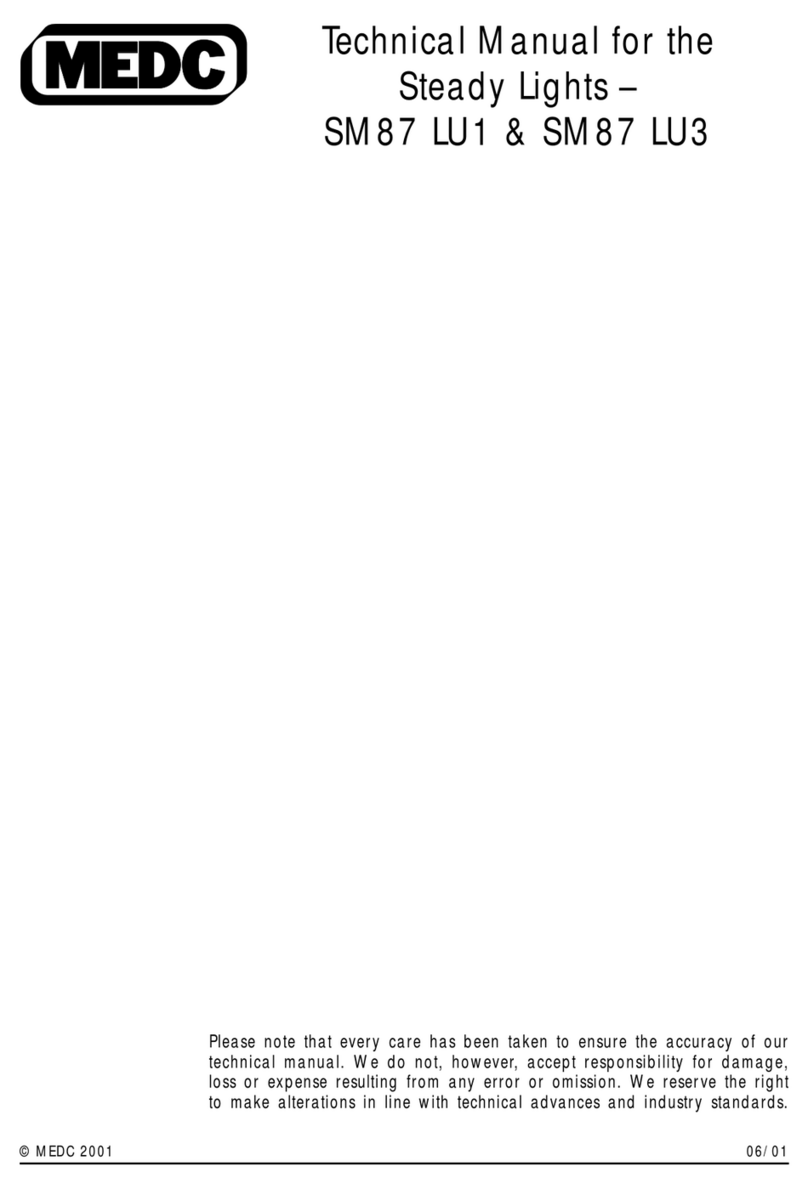
MEDC
MEDC SM87 LU1 Technical manual

INIM Electronics
INIM Electronics enea ES1050 quick start guide
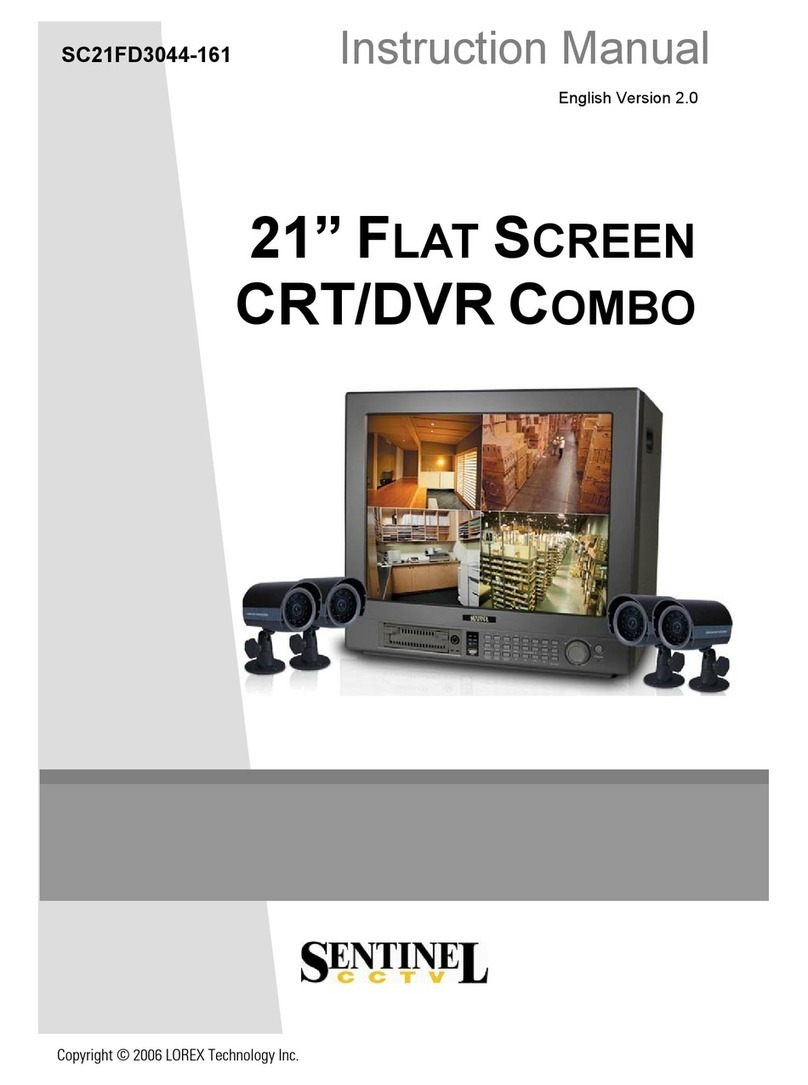
Sentinel
Sentinel SC21FD3044-161 instruction manual
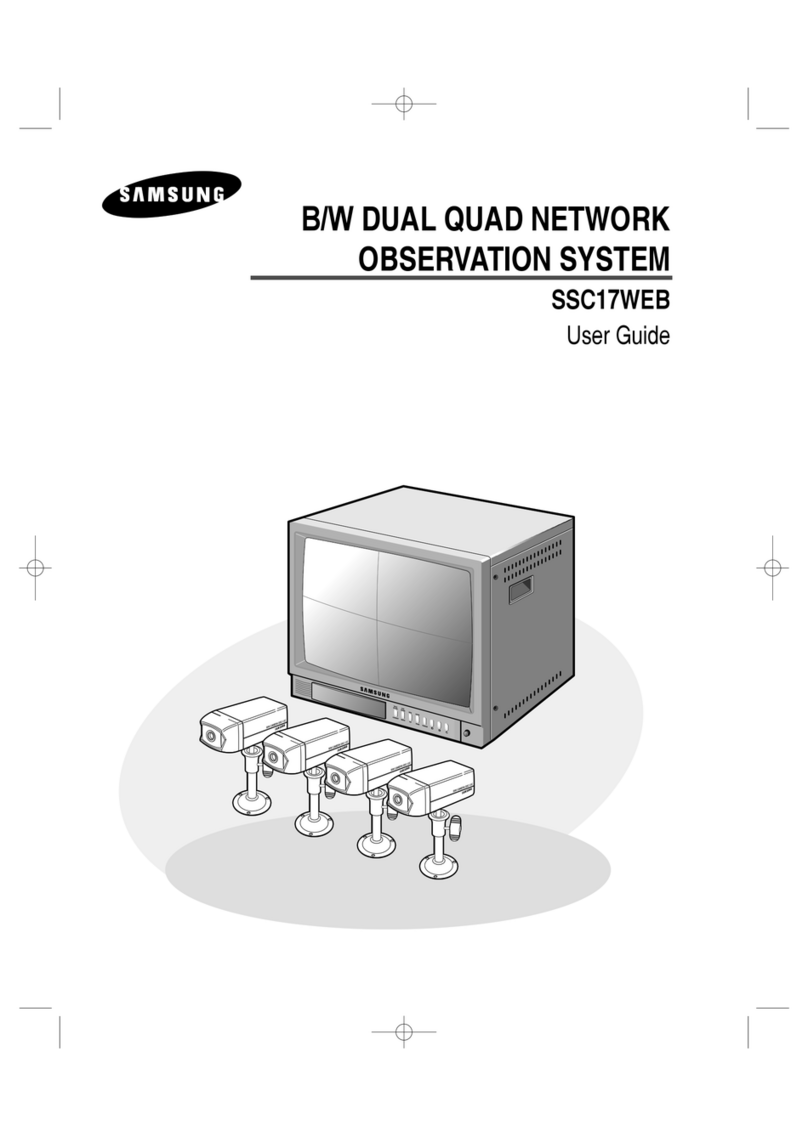
Samsung
Samsung SSC17WEB user guide
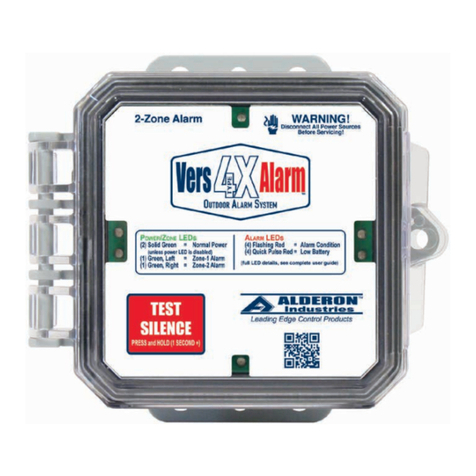
Alderon Industries
Alderon Industries VersAlarm 4X Operation, maintenance and installation manual
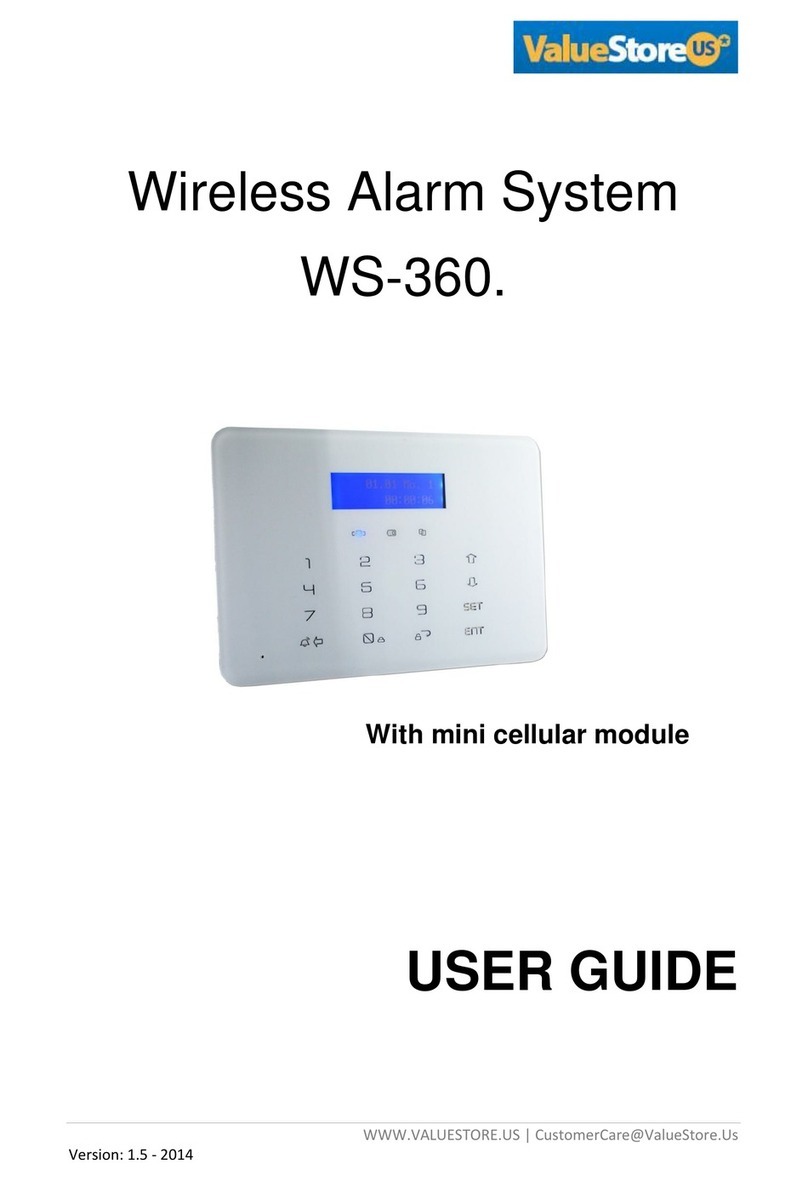
ValueStore US
ValueStore US WS-360 user guide
